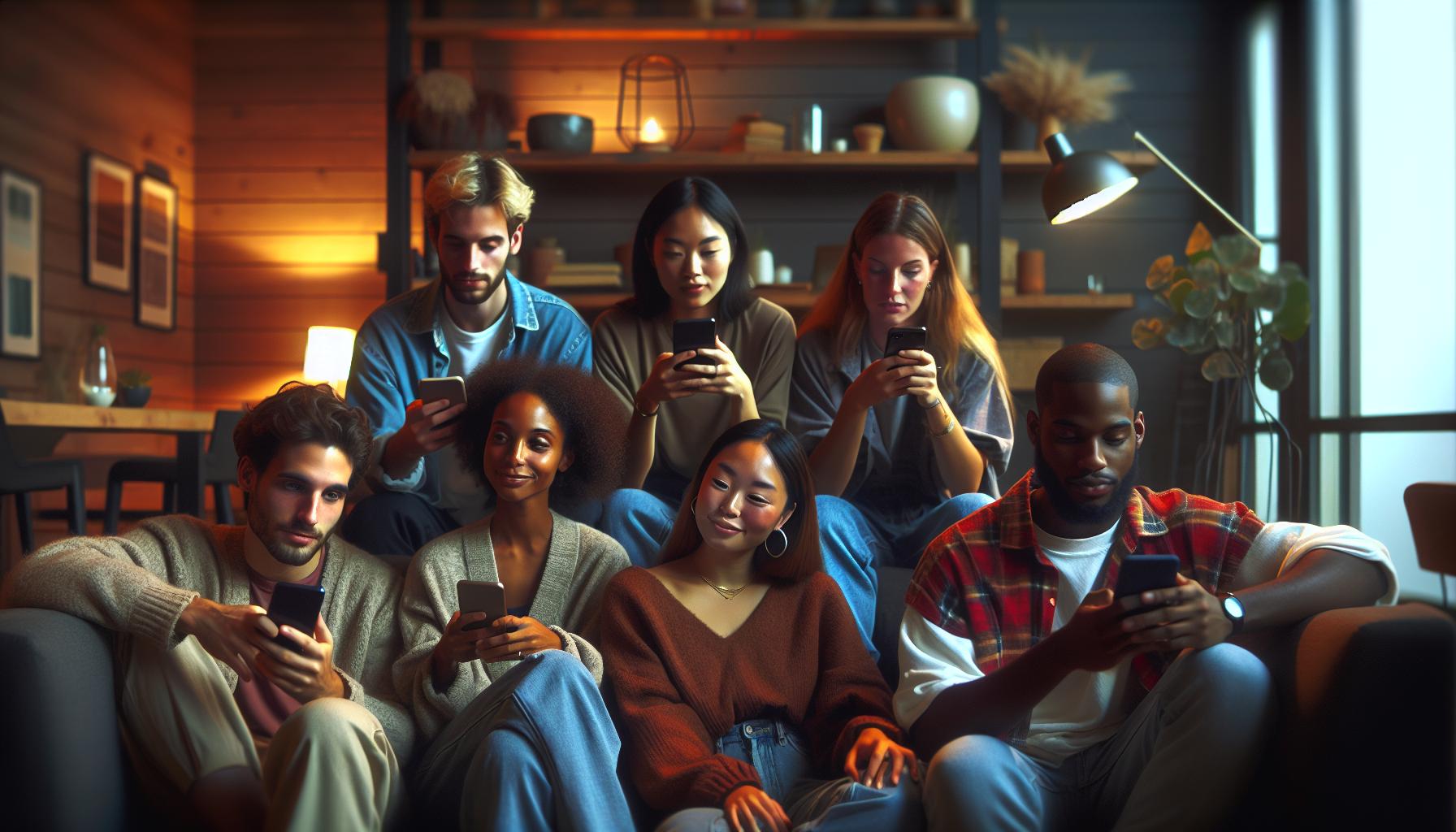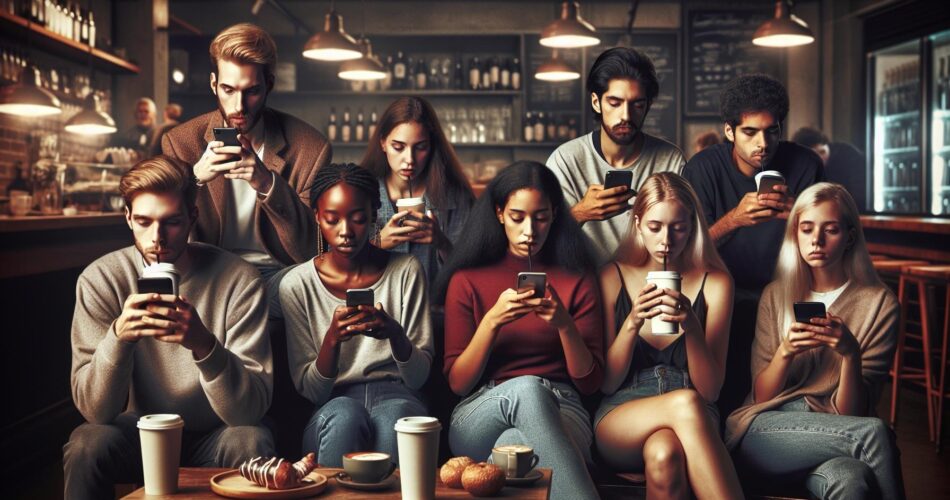Social media has transformed from a simple way to connect with friends into a digital behemoth that's taken over our daily lives. While platforms like Instagram Facebook and Twitter promise to keep us connected they often do the exact opposite creating an artificial world where likes and shares reign supreme.
The dark side of social media isn't just about wasted time scrolling through endless feeds. It's wreaking havoc on mental health damaging real-world relationships and turning personal data into a commodity. From FOMO-induced anxiety to privacy concerns these platforms have become digital quicksand pulling users deeper into a web of virtual validation and targeted advertising.
Cons About Social Media
Social media addiction manifests through compulsive platform usage patterns characterized by an inability to control screen time. Digital dependence continues to surge as platforms implement sophisticated engagement algorithms designed to maximize user retention.
Warning Signs of Excessive Use
- Checking social media accounts immediately upon waking up
- Spending 5+ hours daily scrolling through feeds
- Experiencing anxiety when unable to access social platforms
- Neglecting work responsibilities to engage with social content
- Continuing platform use despite negative consequences
- Making multiple attempts to reduce usage without success
- Lying about time spent on social media
- Using social platforms to escape negative emotions
- Feeling phantom phone vibrations or notifications
- Lost interest in offline activities or hobbies
Impact on Mental Health
Social media addiction correlates with increased rates of depression anxiety. Studies show 27% of frequent social media users experience clinical symptoms of depression compared to 12% of moderate users. Platform engagement triggers dopamine releases creating reward cycles similar to substance dependencies.
Key mental health impacts include:
- Decreased self-esteem from social comparison
- Heightened anxiety from constant connectivity
- Sleep disruption from late-night scrolling
- Increased feelings of loneliness despite online connections
- Difficulty maintaining focus on tasks
- Mood swings related to social validation
- Withdrawal symptoms when attempting to disconnect
Research indicates teens spending 3+ hours daily on social media face a 35% higher risk of mental health issues compared to peers with limited usage.
Privacy and Data Security Concerns

Social media platforms collect extensive personal data from users through sophisticated tracking systems. This data collection extends beyond direct interactions to include browsing habits, location data, and device information.
Personal Information Exploitation
Social media companies monetize user data by selling it to advertisers and third-party organizations. Facebook processes over 500 terabytes of user data daily, using it to create detailed demographic profiles for targeted advertising. Personal details like birth dates, email addresses, and phone numbers become valuable commodities in data marketplaces. Hackers target these platforms specifically, with 4.5 billion records exposed in data breaches during 2021. Privacy settings offer limited protection, as platforms regularly update their terms of service to expand data collection permissions. Users face identity theft risks when cybercriminals exploit leaked personal information from social media databases.
Digital Footprint Risks
Every like, share, comment creates a permanent digital record that remains accessible long after deletion from visible platforms. Employers examine candidates' social media histories, with 70% of recruiters rejecting applicants based on their online presence. Photos, location check-ins, tagged posts contribute to detailed digital profiles used by data brokers. Search engines cache social media content, making past posts discoverable through archived websites. Facial recognition systems scan posted images, creating biometric databases without user consent. Online activities reveal patterns about personal habits, relationships, political views that algorithms use to predict future behaviors. Cyberstalkers exploit public social media information to track individuals' routines locations preferences.
Effects on Real-World Relationships

Social media platforms disrupt traditional interpersonal connections by replacing authentic interactions with digital alternatives. The impact extends beyond screen time to affect how people communicate maintain relationships in person.
Declining Face-to-Face Communication
Face-to-face interactions decrease as social media usage increases. Studies reveal that adults spend an average of 145 minutes daily on social platforms instead of engaging in personal conversations. Digital communication lacks crucial elements of human interaction:
- Nonverbal cues like facial expressions body language disappear behind screens
- Emotional depth diminishes without physical presence tone of voice
- Conversation skills deteriorate from reduced practice in real-time dialogue
- Social anxiety intensifies when transitioning from online to offline interactions
- Family dynamics suffer as members interact through devices rather than directly
Social Comparison and FOMO
Social media creates an environment of constant comparison through carefully curated content. Research indicates 88% of users experience FOMO (Fear of Missing Out) when viewing others' posts. The psychological effects manifest in several ways:
- Users compare their regular lives to others' highlight reels
- Social gatherings lose value as participants focus on documenting rather than experiencing
- Relationships strain under pressure to maintain perfect online appearances
- Direct messages replace meaningful conversations
- People attend events solely for social media content creation
These behaviors create a cycle of superficial connections digital validation seeking that undermines genuine relationship building.
Academic and Professional Performance

Social media's impact on academic and professional performance manifests through decreased focus and compromised cognitive abilities. Research from Stanford University indicates a direct correlation between excessive social media use and declining academic grades among students.
Reduced Productivity
Social media interruptions reduce workplace productivity by 40% according to a Harvard Business Review study. Employees checking social media platforms 14 times per day lose an average of 2.1 hours of productive time. Multitasking between work tasks and social media leads to a 20% decline in performance quality. Mobile notifications from social platforms interrupt deep work sessions every 18 minutes, taking users 23 minutes to regain full concentration. The constant context switching between professional tasks and social feeds creates cognitive strain that diminishes work output quality.
Shortened Attention Spans
Digital platforms designed for quick content consumption reduce average attention spans from 12 minutes to 8 seconds. Users scroll through 300 feet of social media content daily, training their brains to process information superficially. Modern students demonstrate 25% less ability to focus on single tasks compared to pre-social media generations. Platform algorithms promoting short-form content contribute to decreased comprehension rates in academic reading. Microsoft research reveals that heavy social media users struggle to maintain focus during 45-minute learning sessions, with attention dropping significantly after 15 minutes of continuous engagement.
Cyberbullying and Online Harassment
Social media platforms enable anonymous harassment creating environments where bullies target victims without accountability. Studies show 59% of teens experience cyberbullying through social media platforms according to the Pew Research Center.
Forms of Digital Abuse
Digital harassment manifests in multiple documented forms across social platforms:
- Persistent harassment through repeated hostile messages targeting specific users
- Doxxing involving the public release of private information like addresses phone numbers
- Cyberstalking via constant monitoring tracking location updates social activity
- Identity impersonation through fake profiles mimicking the target's persona
- Public shaming campaigns organizing groups to systematically harass individuals
- Revenge porn sharing intimate content without consent to humiliate victims
- Trolling with inflammatory comments designed to provoke emotional responses
| Common Forms of Digital Abuse | % of Users Affected |
|---|---|
| Direct harassment messages | 41% |
| Hate speech/threats | 35% |
| Identity theft/impersonation | 27% |
| Doxxing | 19% |
Long-Term Psychological Effects
Cyberbullying creates lasting trauma in victims' mental health:
- Depression rates increase 3x among frequent targets of online harassment
- Anxiety disorders develop in 65% of cyberbullying victims under age 18
- PTSD symptoms appear in 43% of individuals following severe digital abuse
- Social withdrawal affects 71% of harassment targets limiting daily activities
- Self-esteem issues persist 2+ years after cyberbullying incidents end
- Sleep disorders impact 68% of victims experiencing ongoing digital harassment
- Academic performance drops 35% among students facing social media bullying
Research indicates victims of sustained online harassment show elevated cortisol levels similar to those experiencing physical abuse measuring 3x higher than normal baseline readings.
The Spread of Misinformation
Social media platforms accelerate the spread of false information at unprecedented rates. Research shows that false news stories spread 6 times faster than factual ones on Twitter, reaching thousands of users within minutes.
Echo Chambers and Filter Bubbles
Social media algorithms create personalized content feeds that limit exposure to diverse viewpoints. These algorithms analyze user behavior to show content that aligns with existing beliefs, creating echo chambers where users encounter similar opinions repeatedly. Studies indicate that 73% of social media users remain within ideological bubbles, interacting primarily with content that confirms their pre-existing views. Platform recommendation systems amplify this effect by promoting content similar to past interactions, leading to increased polarization. Data from MIT researchers reveals that users in echo chambers are 3 times more likely to share unverified information.
Impact on Public Opinion
Social media platforms shape public opinion through algorithmic content distribution. Facebook's News Feed influences the views of 2.9 billion monthly active users through selective content presentation. Research from the Pew Research Center shows that 55% of adults get their news from social media platforms. Electoral studies demonstrate that misleading social media content influenced voting decisions for 27% of users during recent elections. Platform engagement metrics favor sensational content over factual information, with emotional posts receiving 15% more interactions. Analysis reveals that false narratives gain traction through coordinated sharing networks, reaching an average of 10,000 users before fact-checkers intervene.

